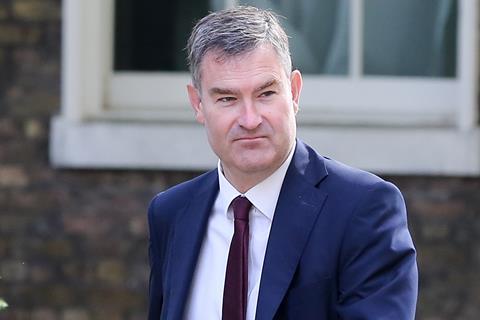When the Civil Liability Act ushers in reduced whiplash payouts and curtails legal costs for minor injuries, defence lawyers will need to raise their game alongside their claimant counterparts. Melanie Newman reports
THE LOW DOWN
Long before claimant personal injury lawyers had their fees drastically cut by civil litigation reforms, insurers were using their commercial power to suppress their own external legal spend. Two decades of downward pressure on rates has driven consolidation and innovation among defendant PI firms, though some feel such pressure has gone too far – one insurance executive is said to have boasted he spent more on carpets than lawyers. But whereas many claimant lawyers think government justice policies will kill many classes of claim, insurer lawyers are not so sure. They believe claimant firms are adapting their strategy to keep claims viable. Practice in road traffic accident claims is set to be a particular battleground, and the prevalence of claims management companies means a high volume of claims must be dealt with at low cost.
Insurers are likely to make large savings as a result of recent government changes to the way legal claims for low-value traffic accident claims are reimbursed. Claimant personal injury lawyers are unhappy. But life is hardly a bed of roses for their defendant peers.
There is an apocryphal tale among defendant PI lawyers involving a claims director at one of the larger insurers. During an industry dinner, the director is said to have remarked that the insurer ‘spends more on carpets than on its solicitors’.
No one from the Forum of Insurance Lawyers (FOIL) was willing to comment on panel firm fees – on or off the record.
But Steven Conway of Keystone Law says: ‘There has been a continual downward pressure on rates by the insurance industry. A lot of the lower-value defendant personal injury work is unprofitable. It’s taken on by insurers’ panel firms as a loss-leader in the hope they will make a decent rate of return on the higher-value work.’
There is not much solicitors can do about this, Conway adds: ‘There’s no equality of bargaining. Insurance firms are absolutely massive compared to most law firms. Lawyers are desperate for the work as they’re under internal pressure to grow and they’re scared of saying no in case the job goes to a competitor.’ Hence FOIL’s diffidence, perhaps.
Conway gained 20 years’ experience in general insurance litigation at major firms, including Browne Jacobson and Barlow Lyde & Gilbert (now part of Clyde & Co) before joining Keystone in 2016. ‘Hourly rates haven’t changed in the time I’ve been doing this,’ he notes.
He decided to join Keystone after seeing much of the work he brought in farmed out to cheaper, less experienced colleagues. ‘Much of my time was being spent on dealing with complaints about them,’ he says. This experience was not unique: ‘It’s the same at all the big panel firms and is an inevitable result of pressure on rates.’
Next year, the sector will face the introduction of reforms under the Civil Liability Act which may be good news for insurers, less so for their lawyers.
Insurers successfully lobbied for the changes, arguing that motor premiums were becoming unaffordable to many drivers as claims surged.
The result, say claimant PI lawyers, will be further consolidation in the legal market, proliferation of claims management firms and the denial to thousands of injured people of well-deserved compensation.
On the defence side, Conway says: ‘There’s been a lot of consolidation among defendant lawyers already and I suspect that trend will continue, although many of the smaller firms have already gone.’
By contrast Mark Hemsted, a partner in Clyde & Co’s volume motor practice, believes that – subject to the detail – the impact on the legal market is unlikely to be as drastic as his claimant counterparts suggest. Neither does he expect defendant firms to be seriously affected by the reforms, though he acknowledges that practices with a heavy reliance on volume RTA work may suffer in the short-term.
‘There’s an awful lot of uncertainty and a vast amount of speculation,’ he says. But if the expected happens, and damages are slashed for traffic injuries to the neck, back and shoulder, twinned with a new small claims limit of £5,000 below which legal costs will not be recoverable, he expects claimant firms to adapt their business strategies accordingly.
‘There will be some movement, but the large claimant solicitors will still be able to make money,’ he believes. Claimant solicitors may have collaborations with agencies to whom they refer claims through the current claims portal, and with whom they may benefit in some way. A new portal for litigants in person will prevent this, commissioning medical reports through the MedCo system. But, Hemsted explains: ‘It is not thought, initially at least, that the new portal will deal with the vast majority of new claims.’ The existing portal will continue for claims where solicitors are appointed. ‘These sources of income will not go away,’ he adds, and will mean that while the larger claimant firms become ‘less profitable they will not necessarily be unprofitable’.
In addition, many claimants may opt to pay for lawyers out of their compensation, Hemsted adds: ‘You can do PPI claims yourself but nearly everyone has instructed a CMC and lost 25% of their damages.’
MOVING WITH THE TIMES

BLM managing partner Vivienne Williams says: ‘Every insurance law firm has had to adapt their practices and ways of working over the last 5-10 years. It’s no longer just about great legal advice – that’s a given.
‘A key change for us is the creation of a data analytics function in 2017, run by a qualified lawyer and two data scientists, because we recognised the need to add value that goes beyond providing data about claims. The volume of case data generated by the insurance and other sectors provides a valuable resource, which can be increasingly exploited by the speed and accuracy of data analytics and artificial intelligence.
‘There are key challenges facing the modern firm, with an ever-growing number of companies trying to find a firm that “does it all”, creating demand for a greater diversification of services. We adapted our business model by creating a commercial advisory and private wealth business stream, which we did over a year ago. It complements our core insurance offering and it means that we’ve expanded the range of services we offer to our insurer clients and their customers.’
Any fall in whiplash claims will eventually be offset by an increase in claims that have been ‘incubated’ upwards, he predicts. The current whiplash tariff is likely only to apply to injuries that have healed within 24 months. Under the proposed new process, the claimant would be allowed to wait out their symptoms before serving a medical report. Defendant lawyers have argued this will give claimants an opportunity to inflate the duration of their symptoms, taking the claim out of tariff.
‘That’s where the battleground will be. We won’t accept that the average duration of a whiplash claim under the Civil Procedure Rules was seven months and it’s suddenly gone up to 15 months or whatever,’ Hemsted says. ‘Lawyers will be heavily involved in trying to show these claims are being inflated artificially.’
James Heath of Keoghs, president of FOIL, says the organisation has identified incubation to the Ministry of Justice and Motor Insurers’ Bureau as a ‘risk factor’ for potential abuse of the new process.
‘With any process there’s a potential for abuse and the obvious potential abuses in the new process are incubation and tariff plus,’ he said.
The only injuries compensated at tariff will be those that fall within the whiplash definition with additional injuries – the ‘plus element’ – compensated by reference to judicial guidelines.
‘There is scope to abuse that in order to maximise and inflate claim values by the introduction of broader additional injuries,’ Heath said. These might include banged knees, elbows and arms; sprained thumbs, jarred ankles, headaches, tinnitus and psychological injuries.
‘That’s a major concern,’ Heath says. ‘We are already seeing increased volumes of motor PI claims where additional site injuries are presented, so it’s not a question that a switch will be flicked when the reforms come live.’
By making these claims in advance of the new tariff being implemented they will ‘become the new norm’, Heath suggests. ‘If that suddenly started happening only after the reforms are implemented, it would be too obvious.’
Heath acknowledges that this does not necessarily represent abuse of the system: ‘It may be that questions are now being asked that weren’t asked before.’
FOIL, the Association of British Insurers (ABI) and various other bodies have raised concerns with the MoJ but have been told that as claims for these injuries fall outside tariff, it will be up to the judiciary to control them.
‘A third obvious area of potential abuse is “gaming of the tariff”,’ Heath says. ‘Will we see fewer 0-3 month injuries and more 3-6 and 6-9 as prognosis periods increase, reflecting the fact that the process gives an opportunity to inflate claim values via the higher tariff?’
A recent case suggests he is right to be suspicious about claims inflation of this type. In October 2018, following a five year investigation by Horwich Farrelly and LV= General Insurance, a solicitor and a doctor were both given custodial sentences for presenting spurious medical documents on behalf of a claimant. The pair were caught when a paralegal at the law firm accidentally submitted both the real report, which stated the claimant had fully recovered within a week, and an altered report claiming six to eight months of pain.
‘The conversations I’ve had with insurers would suggest they are not expecting an overall reduction in claims – not immediately,’ Heath says. The rationale of the Civil Liability Act was to control inappropriate and unscrupulous claims by taking the financial attractiveness out of a whiplash claim. ‘If claimant representatives still see there being sufficient cash in a claim as a commodity, then you wouldn’t expect frequency to diminish,’ Heath observes.
If the value of claims does decrease sufficiently to deter lawyers and claims management companies, injured parties will still be able to make claims in person through the new portal currently being developed by the government with the aid of the Motor Insurers’ Bureau.
‘There’s a pressing need for more frequent communication and more visible leadership from the MoJ over the coming months to allow the sector to adapt,’ says BLM’s director of policy development and government affairs, Alistair Kinley. ‘A really critical element is the delivery of an accessible and user-friendly portal for people to present their claims. There could be some risky unintended consequences – such as a cottage industry of McKenzie friends in whiplash claims – which must be guarded against.’
If it is unclear whether claim numbers will fall as a result of the reforms, it follows that no one will say if motor insurance premiums will come down. One of the main stated catalysts of the Civil Liability Act was the increasing unaffordability of car insurance.
‘It was a core part of the regulatory framework that insurers would have to report back on the savings they’d been able to generate because of the reforms,’ Heath explains. ‘But there are a whole host of issues beyond the cost of whiplash claims that impact on premiums.’ Repairs are becoming more expensive as vehicle technology becomes more sophisticated, for example.
There is also the government’s response to a consultation on the discount rate applied to compensation for more serious injuries to take into account. As the first discount rate review under the new methodology provided for in the Civil Liability Act, the new rate was eagerly awaited by insurers.

The rate is used to calculate how much insurers should pay in compensation to people who have suffered serious injuries to cover predicted future losses. Because compensation is paid as a lump sum, the payment is adjusted to account for the interest the recipient could expect to earn on the lump sum if invested. The higher the rate, the less insurers have to pay out.
Having lobbied hard for an increase from the -0.75% rate set in 2017, the revelation on 15 July that the rate would rise to -0.25% was greeted with howls of protest, despite a government estimate the change would save insurers up to £320m per year.
The government’s impact assessment reiterated its expectation ‘that these benefits will be mostly passed on to consumers in the form of lower insurance premiums’.
Joe McManus, a partner in Kennedys’ high-value injury practice, said: ‘This does not fit with what government spokespeople had been saying previously, which is that the rate would be somewhere between zero and 1%. From a defence point of view the outcome is really quite disappointing.’
James Dalton, director of general insurance policy at the ABI, refuses to accept the lord chancellor’s finding of a £320m saving for insurers. ‘I do not accept that analysis at all,’ he says. Rather than comparing the impact of introducing a -0.25% rate with -0.75%, the comparison should have been with 0-1%, he explained. ‘You can only make savings based on what people are doing and the clear indication to the market was that it was going to increase to [between 0 and] 1%. Insurers have been reserving and pricing on that basis.’ Using the new calculation results in costs, not benefits, he insisted.
Insurers had also proposed differential rates be set for claimants, with shorter and longer-term awards. The government ruled out adopting a ‘dual rate’ for this review, citing insufficient evidence, but said the matter would be consulted on before the next review.
With insurers taking a hit they had not provisioned for, the pressure on the defence lawyers they instruct seems set to intensify.

Melanie Newman is a freelance journalist




























5 Readers' comments